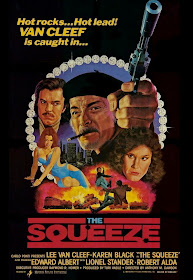It’s plain that the folks at Walt Disney Productions were trying to re-create the magic of their ’60s megahit Mary Poppins when they made Bedknobs and Broomsticks, but the latter film has enough charm and imagination to feel like more than just a retread. As was Poppins, this picture is an epic-length musical adventure about a magical woman assuming guardianship of a group of children, and it features an extended sequence blending animation and live action. However, the similarities don’t end there: David Tomlinson, who played the father in Mary Poppins, gets promoted to the male lead in Bedknobs, and the sibling songwriting team of Richard Sherman and Robert Sherman composed tunes for both movies.
Bedknobs is set in England during World War II, when singleton Eglantine Price (Angela Lansbury) becomes the temporary caretaker for a trio of displaced London orphans. The kids try to escape during their first night in the Price family castle, of which Eglantine is the only resident, then decide to stay when they spy her flying on a broomstick—it turns out she’s an apprentice witch, so the kids strong-arm her into providing cushy treatment by threatening to expose her secret. Soon enough, the whole gang is off on an adventure because Eglantine’s supernatural correspondence course abruptly ends before the final lesson, and she’s determined to get the final spell she needs to become a full-fledged witch.
The crew hops onto an enchanted transporting bed (the titular knob is the key that starts the bed’s magic working) and treks to London. There, they find Eglantine’s erstwhile educator, con man Emelius Browne (Tomlinson). Amazed that one of his students has real magical ability, Browne reveals that he copied the spells out of an old book but never believed they would work, so the crew’s next adventure is looking for the pages missing from Browne’s copy of the book. This leads to a run-in with a shady book collector, plus a long interlude in the (animated) realm of Naboombu, a land of talking animals ruled by a blowhard lion king. After these amusing cartoon high jinks, the gang returns to Eglantine’s castle, with the elusive spell in their possession, just in time to foil an invasion by an advance squadron of Nazis.
All of the usual Disney tropes are in evidence, from clever children to silly adults, and from goofy slapstick to sweet songs. So, while Bedknobs doesn’t break any new ground, it boasts playful wit. Lansbury is endearing (and far less sickly-sweet than Mary Poppins star Julie Andrews); Tomlinson is an enjoyably blustery boob; the kids aren’t egregiously cutesy; and the showdown with the Nazis is a special-effects delight—Eglantine animates museum artifacts, creating a legion of hollow uniforms and suits of armor. These strengths make Bedknobs palatable for both adults and the film’s intended audience.
FYI, the picture hit some speed bumps on the way to theaters. After premiering at a length of nearly three hours, it was cut to two hours for its initial U.S. release, then trimmed further for a 1979 reissue. (Costar Roddy McDowall was the biggest victim of the edits, disappearing almost completely from the shortened versions.) In the 1990s, a 139-minute version approximating the original cut was assembled for DVD. As a result of all of this backing-and-forthing, the movie is now widely available as a two-hour feature and as a two-and-a-half hour epic.
Bedknobs and Broomsticks: GROOVY






















